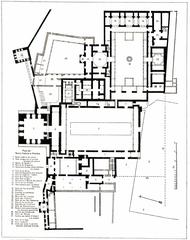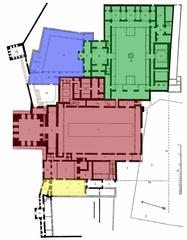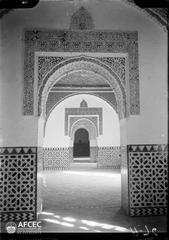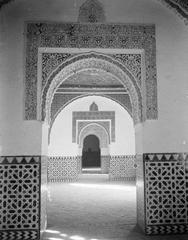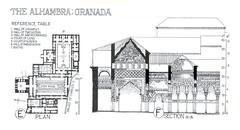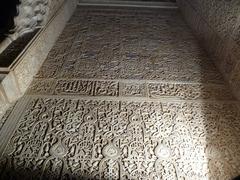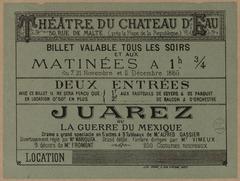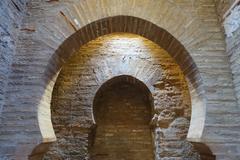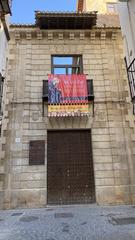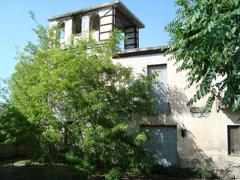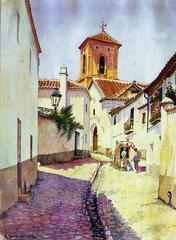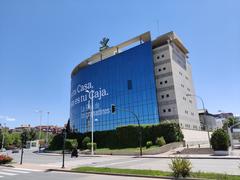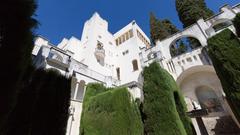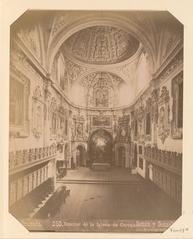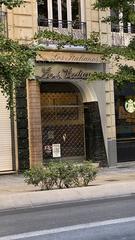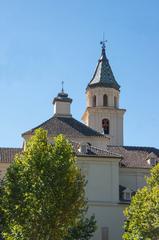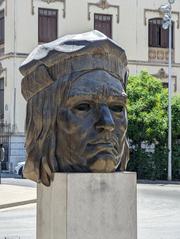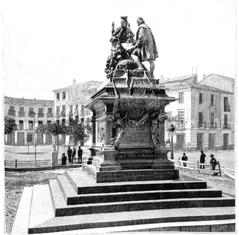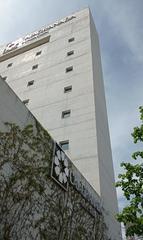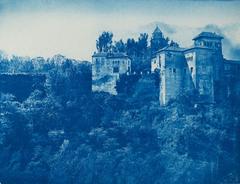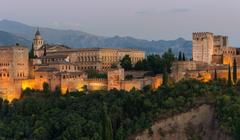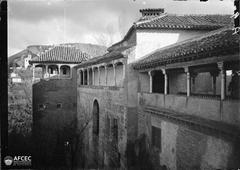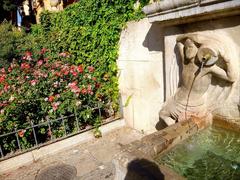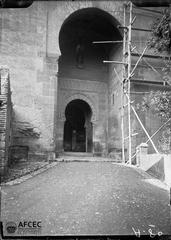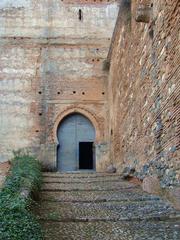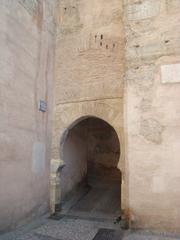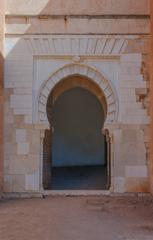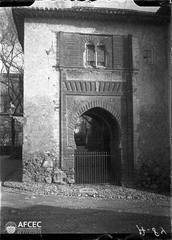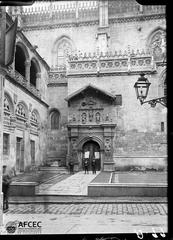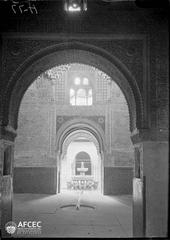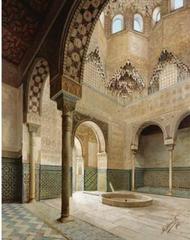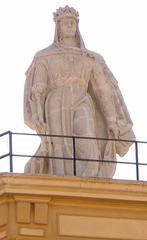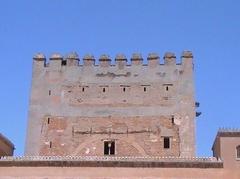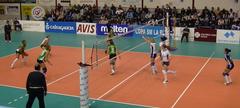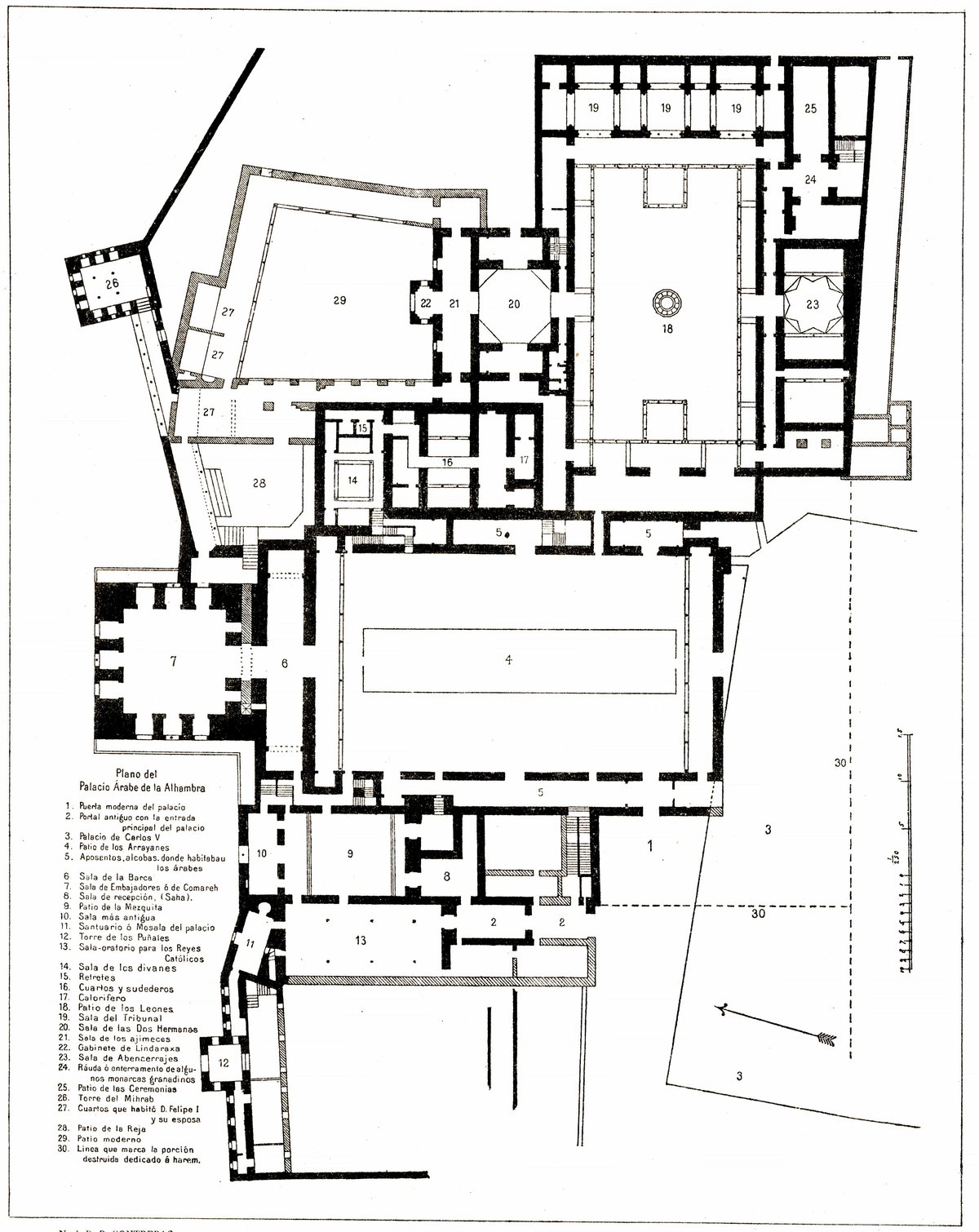
Visiting Hours, Tickets, and Historical Sites: A Guide to Patio de los Arrayanes in Granada, Spain
Published Date: 17/07/2024
Introduction to Patio de los Arrayanes
The Patio de los Arrayanes, also known as the Court of the Myrtles, is an architectural gem nestled within the Alhambra complex in Granada, Spain. Renowned for its stunning Moorish architecture and serene ambiance, this courtyard is a testament to the grandeur of the Nasrid dynasty, the last Muslim dynasty in Spain. Constructed primarily during the reigns of Yusuf I and Muhammad V in the 14th century, the Patio de los Arrayanes offers a window into the opulent lifestyle and sophisticated aesthetic sensibilities of the Nasrid sultans (Alhambra.org). Visitors to this iconic site are often captivated by its historical significance, intricate stucco work, and the tranquil beauty of its central reflective pool, which is flanked by lush myrtle bushes, giving the courtyard its name.
This comprehensive guide aims to provide an in-depth look into the history, architectural brilliance, and practical aspects of visiting the Patio de los Arrayanes. Whether you are a history enthusiast, an architecture aficionado, or a casual traveler, this guide will equip you with all the necessary information to make your visit to this UNESCO World Heritage site unforgettable.
Table of Contents
- Introduction
- History and Cultural Significance
- Architectural Elements
- Visitor Experience
- Practical Tips for Visitors
- Conclusion
History and Cultural Significance
Historical Background
The Patio de los Arrayanes, also known as the Court of the Myrtles, is one of the most iconic and historically significant parts of the Alhambra in Granada, Spain. The Alhambra itself is a palace and fortress complex that dates back to the mid-13th century, constructed during the Nasrid dynasty, the last Muslim dynasty in Spain. The Patio de los Arrayanes was built under the reign of Yusuf I (1333-1354) and later completed by his son, Muhammad V (1354-1391) (Alhambra.org).
Cultural Context
The Patio de los Arrayanes is a central feature of the Alhambra in Granada, Spain. This iconic courtyard is a prime example of Nasrid architecture, reflecting the zenith of Islamic art and architecture in the Iberian Peninsula during the 13th and 14th centuries. The Alhambra itself was constructed primarily during the reign of Muhammad I and his successors, with the Patio de los Arrayanes being a significant part of the Comares Palace, completed under the rule of Yusuf I and Muhammad V.
Architectural Elements
Layout and Symmetry
The Patio de los Arrayanes is characterized by its rectangular layout, measuring approximately 42 meters in length and 22 meters in width. The courtyard is symmetrically designed, with a large central pool flanked by myrtle bushes, which give the patio its name. The pool, measuring about 34 meters in length and 7.10 meters in width, serves as a reflective surface, mirroring the surrounding architecture and enhancing the sense of space and tranquility.
Columns and Arches
The courtyard is bordered by arcades on its longer sides, supported by slender marble columns. These columns are intricately decorated with arabesques and calligraphy, showcasing the skilled craftsmanship of Nasrid artisans. The arches are horseshoe-shaped, a common feature in Islamic architecture, and are adorned with muqarnas, a form of ornamented vaulting that creates a honeycomb-like effect.
Stucco Work
One of the most striking features of the Patio de los Arrayanes is the elaborate stucco work that adorns the walls and arches. This stucco is intricately carved with geometric patterns, floral motifs, and Arabic inscriptions, often featuring verses from the Quran. The use of stucco allowed for detailed and delicate designs, which were then painted in vibrant colors, although much of the original paint has faded over time.
Water Features
Water plays a crucial role in the design of the Patio de los Arrayanes, both aesthetically and symbolically. The central pool not only reflects the surrounding architecture but also serves to cool the air and create a serene atmosphere. The sound of water flowing from the fountains at either end of the pool adds to the sensory experience, embodying the Islamic garden’s concept of paradise.
Materials and Techniques
The materials used in the construction of the Patio de los Arrayanes include marble, stucco, wood, and ceramic tiles. The marble columns and floors provide a sense of luxury and durability, while the stucco allows for intricate decorative work. Wooden ceilings, often elaborately carved and painted, add warmth and texture to the space. Ceramic tiles, known as azulejos, are used to create colorful mosaics that enhance the visual appeal of the courtyard.
Influence of Islamic Art
The design of the Patio de los Arrayanes is heavily influenced by Islamic art and architecture, which emphasizes symmetry, geometry, and the use of light and water. The courtyard’s layout and decorative elements reflect the principles of Islamic garden design, which seeks to create a harmonious and contemplative space. The use of calligraphy and arabesques also highlights the importance of the written word and the natural world in Islamic culture.
Preservation and Restoration
Over the centuries, the Patio de los Arrayanes has undergone various restoration efforts to preserve its architectural integrity and aesthetic beauty. These efforts have included the cleaning and repair of stucco work, the restoration of wooden ceilings, and the maintenance of the central pool and fountains. Modern conservation techniques have allowed for the careful preservation of original materials and designs, ensuring that the courtyard remains a testament to the artistic and architectural achievements of the Nasrid dynasty.
Visitor Experience
Visiting Hours and Tickets
The Alhambra, including the Patio de los Arrayanes, is open to visitors throughout the year. Visiting hours can vary depending on the season, so it is advisable to check the official Alhambra website for the most up-to-date information. Tickets can be purchased online in advance, which is recommended during peak tourist seasons to avoid long queues.
Accessibility
The Patio de los Arrayanes and the Alhambra complex are designed to be accessible to all visitors. Wheelchair access is available, and there are guided tours specifically designed to accommodate visitors with mobility challenges. It is always a good idea to inform the staff in advance if special accommodations are needed.
Nearby Attractions
Granada is rich in historical and cultural sites. After exploring the Patio de los Arrayanes, visitors can also enjoy the Generalife, the Nasrid Palaces, and the Alcazaba. The city itself offers a wonderful array of attractions, including the Granada Cathedral, the Royal Chapel, and the bustling Alcaicería market.
Special Events and Tours
The Alhambra often hosts special events, including night tours, which offer a unique perspective of the Patio de los Arrayanes under the moonlight. Guided tours are available in multiple languages, providing in-depth historical and architectural insights. Photography enthusiasts will find numerous spots to capture the beauty of the courtyard, especially during the golden hours of sunrise and sunset.
Practical Tips for Visitors
Opening Hours and Best Time to Visit
The Patio de los Arrayanes is open year-round. During the summer months (April 1 to October 14), visiting hours are from 8:30 AM to 8:00 PM. In the winter months (October 15 to March 31), the hours are from 8:30 AM to 6:00 PM. For any changes in the schedule or special closures, check the official Alhambra website.
To avoid crowds and enjoy a more serene experience, visit early in the morning or late in the afternoon. Weekdays tend to be less crowded compared to weekends.
Ticket Information
Tickets to the Alhambra, including access to the Patio de los Arrayanes, can be purchased online or at the ticket office. Due to high demand and limited daily entries, buying tickets in advance is highly recommended. General admission costs approximately €14 for adults, while children under 12 enter for free. There are discounted rates for seniors and students. For detailed pricing and ticket purchases, visit the official ticketing page.
Guided Tours and Audio Guides
For a richer experience, consider joining a guided tour or renting an audio guide. Guided tours are available in multiple languages and provide in-depth historical and architectural insights. Audio guides, available in several languages, offer detailed explanations of various sections of the Alhambra, including the Patio de los Arrayanes.
Photography Tips
Photography is allowed in the Patio de los Arrayanes, but the use of tripods and flash is prohibited. The best time for photography is early morning or late afternoon when lighting is softer. For capturing intricate Moorish architectural details, a camera with a good zoom lens is recommended.
Dining and Refreshments
Several cafes and restaurants within the Alhambra complex offer refreshments and meals. The Parador de Granada provides a unique dining experience with stunning views, while the Alhambra Café offers a variety of snacks and beverages.
Souvenirs and Shopping
The Alhambra complex has several gift shops where visitors can purchase souvenirs, including books, postcards, and replicas of Moorish art. The main gift shop is located near the entrance.
Safety and Etiquette
Respect the historical and cultural significance of the Patio de los Arrayanes and the Alhambra complex. Do not touch the delicate stucco work, maintain a respectful noise level, and follow designated pathways. Security personnel are present to ensure safety and preservation.
Weather Considerations
Granada has a Mediterranean climate with hot summers and mild winters. Summer temperatures can exceed 30°C (86°F), so wear light clothing, a hat, and sunscreen. Winter temperatures can drop to around 5°C (41°F), so dress in layers. Comfortable walking shoes are essential due to the extensive grounds and uneven surfaces.
Language and Communication
While Spanish is the primary language spoken in Granada, many staff members at the Alhambra complex speak English and other major languages. Signage is available in multiple languages, and information brochures can be obtained at the entrance.
FAQ
What are the visiting hours for the Patio de los Arrayanes?
- The Patio de los Arrayanes is open from 8:30 AM to 8:00 PM in summer and from 8:30 AM to 6:00 PM in winter.
How much are tickets for the Alhambra?
- General admission costs approximately €14 for adults, while children under 12 enter for free. Discounted rates are available for seniors and students.
Is there a guided tour available for the Patio de los Arrayanes?
- Yes, guided tours are available and can be booked in advance. They offer detailed insights into the history and architecture of the courtyard.
Are there any accessibility options?
- Yes, the Alhambra is accessible to visitors with disabilities. Wheelchair access and special guided tours are available.
Conclusion
Visiting the Patio de los Arrayanes is not just a journey through one of the most iconic courtyards of the Alhambra but also a step back in time to the height of Islamic rule in Spain. The serene environment, characterized by its reflective pool, intricately designed stucco work, and lush myrtle bushes, offers a unique blend of tranquility and historical grandeur. As part of the larger Alhambra complex, the Patio de los Arrayanes stands as a testament to the artistic and architectural achievements of the Nasrid dynasty.
To fully appreciate this monumental site, visitors are encouraged to plan their visit carefully, taking into account ticket availability, visiting hours, and the best times to avoid crowds. With various guided tours, accessibility options, and nearby attractions, there is something for everyone at the Alhambra. By following the practical tips provided, including photography guidelines and weather considerations, you can ensure a memorable and enriching experience.
For further details on visiting hours, ticket purchases, and special events, refer to the official Alhambra website. Whether you are exploring the architectural marvels or simply soaking in the serene ambiance, the Patio de los Arrayanes promises a captivating and unforgettable journey.
References and Further Reading
- Alhambra.org. (n.d.). The Alhambra. Retrieved from https://www.alhambra.org
- Alhambra-patronato.es. (n.d.). Alhambra Patronato. Retrieved from https://www.alhambra-patronato.es/en/
